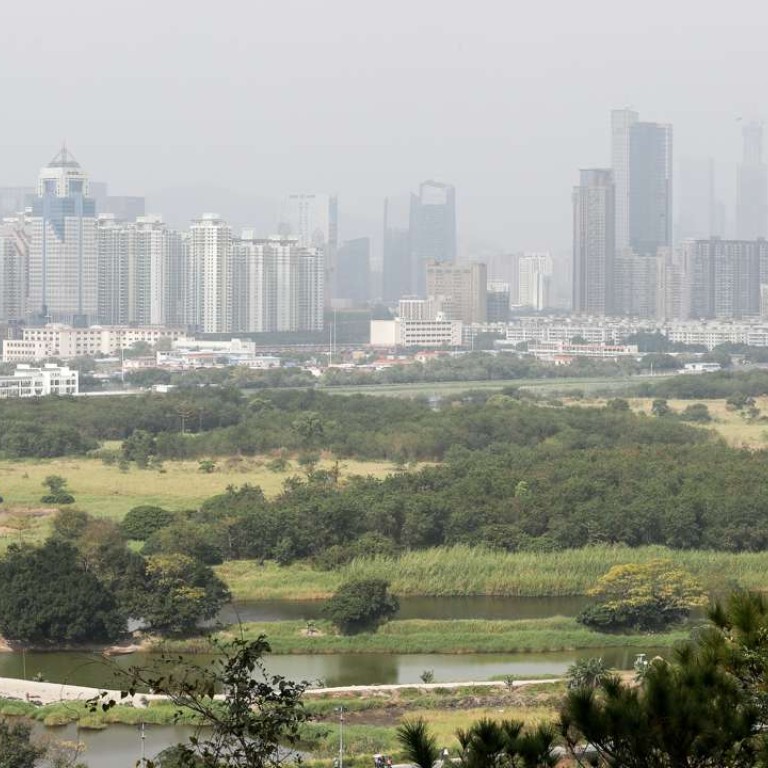
Beijing throws weight behind ambitious ‘Greater Bay Area’ plan for HK and southern China
Beijing will press ahead with a controversial plan for greater integration between Hong Kong and the mainland, Chinese Premier Li Keqiang announced on Sunday.
Delivering his annual work report at the start of the National People’s Congress, Li said the authorities would push on with the Guangdong-Hong Kong-Macau Greater Bay Area concept.
The plan surfaced in a State Council policy paper in March last year but this is the first time it has been mentioned in the premier’s annual report.
It is designed to coordinate economic and infrastructure development in the area to tap into markets in Southeast Asia and South Asia.
The concept dates back to 2011 when it was proposed in a study called “The Action Plan for the Bay Area of the Pearl River Estuary”.
The study was put together by authorities in Hong Kong, Macau, Shenzhen, Dongguan, Guangzhou, Zhuhai and Zhongshan but it caused a stir in Hong Kong, with lawmakers complaining that they were not consulted.
Backers of the plan also hope to extend its reach beyond the Pearl River Delta to other parts of the mainland, including Jiangxi, Hunan, Guangxi, Hainan, Guizhou and Yunnan, according to a Guangdong government report released in January.
Hong Kong representatives in Beijing for annual key political gatherings said there were hurdles to overcome before such a plan could go ahead.
Referring to the different systems in Hong Kong and on the mainland, Chan Yuen-han, a delegate to the Chinese People’s Political Consultative Conference, said the authorities needed to sort out legal issues first.
NPC deputy Maria Tam said the plan would help Hong Kong’s development and employ young people.
In Hong Kong, Joe Fang Zhou, chief research officer at the One Country Two Systems Research Institute, said the crux of the concept was to make better use of each city’s strengths.
“Research and development can take place in Hong Kong and Shenzhen, while manufacturing can take place in Guangdong,” Fang said.
“The Lok Ma Chau Loop development is an example of how the mainland and Hong Kong can cooperate.”
In January, Hong Kong and Shenzhen signed a deal to jointly develop the Lok Ma Chau Loop into an innovation and technology park, settling a long-running dispute over ownership of the border site.
The loop is a piece of muddy wetland on the Shenzhen River that was formed as a result of work to straighten the river and improve its flow in 1997.
Fang said that to advance the bay area plan Hong Kong could consider loosening the permit requirements for mainlanders who need to go to Hong Kong regularly for work.
In another development, a senior mainland rail engineer said there should be no border checks on the high-speed express rail link between Guangzhou, Shenzhen and Hong Kong.
Wang Mengshu, one of the country’s top railway construction engineers and a member of the Chinese Academy of Engineering, hit back at criticism in Hong Kong over the decision to co-locate immigration and customs facilities for both the mainland and Hong Kong at the future West Kowloon Terminus.
Critics say the arrangement would violate the Basic Law and the principle of “one country, two systems” as it would mean mainland officers would be able to enforce mainland customs, immigration and quarantine laws in Hong Kong.
“We should not be too accommodating to the concerns of Hong Kong. The railway should just pass through without border checks,” Wang said.
“‘One country, two systems in only transitional’,” he said. “Hong Kong is a province of China.”
Additional reporting by Zhuang Pinghui



